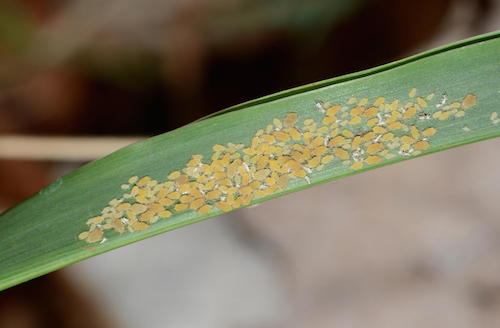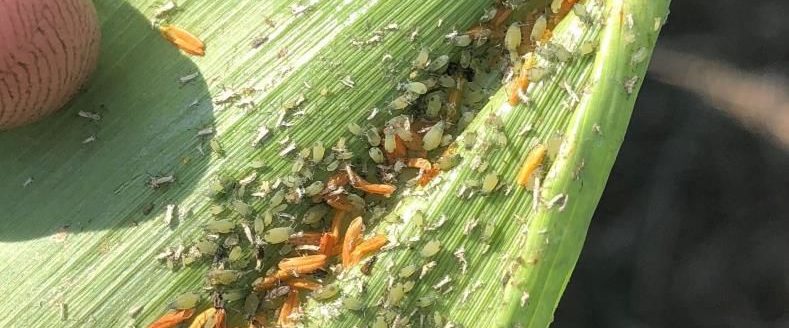The question entomologist Sarah Zukoff gets asked most often is: what is the year going to be like for insect pests? And the simple answer is it depends on the weather.
Zukoff, entomologist with Kansas State University, gave several Integrated Pest Management tips during Sorghum U in Salina and Dodge City.
Even if sorghum growers plant sugarcane aphid-resistant varieties in the southern states, scouting regularly, spraying when needed and doing all the “right” things to slow the sugarcane aphid, it all still depends on weather.
“If we have a really nice, cold spring and a nice cold start to winter these will be less likely to move up north,” Zukoff said of the sugarcane aphid. “If we have a nice warm spring and the summer ends up nice and hot, we have no cold snaps, then they’ll continue to move forward from here.”
Most of the SCA overwinter in Texas, and are on sorghum, which is a perennial crop. They reproduce at a prolific rate, then ride the wind to northern states. It gets too cold in northern states for the SCA to survive over the winter.
On www.myfields.info, under the sugarcane aphid section, there’s a map that’s updated daily, tracking the aphid’s progress north.
What makes the SCA such a problem in sorghum? Mostly it’s because of the rate at which the aphids reproduce and the amount of honeydew they’re able to produce. Honeydew is the aphid’s excrement and it makes harvest troublesome and gums up the machines. The SCA reproduces quickly when it’s hot and because of the aphid feeding on the plant many producers have seen their sorghum plants lodge as well as problems with filling the seed.
“Imagine they come in here at milk stage and you don’t treat them and they stay heavy. On top of the honeydew problems you’ll also have berry fill problems,” she said. “If they come in really late and you have your grain already filled at hard dough then you don’t have problems with berry problems you’ll just maybe have problems with honeydew.”
The moral of the story is plant as early as possible in hopes the sorghum is mature by the time aphids come in to prevent grain fill problems, Zukoff said.
Spraying for the aphids is “kind of the elephant in the room,” Zukoff said.
“When they come late in the season, do we spray or do we not spray?” she said. “So it comes down to really money and it also comes down to what varieties we’re using and maybe how many beneficials are in the field.”
She suggests if the crop is near the hard dough stage, late in the season and the aphids come in heavy—harvest might not be an option if the SCA are above threshold.
“Your plants are looking pretty susceptible, and you think you have a pretty susceptible variety, you’re going to think about treating with the lowest recommended rate of Transform or Sivanto,” she said.
When aphids are coming into an area —whether producers are checking the map or hearing it from their neighbors—start checking fields a little more often.
“If you can do it every three to four days when they’re near you that’s the best,” Zukoff said. “It really is hard to get out there and check sorghum that often, especially when you can have really thick hot spots in the center of the field.”
Kylene Scott can be reached at 620-227-1804 or [email protected].




